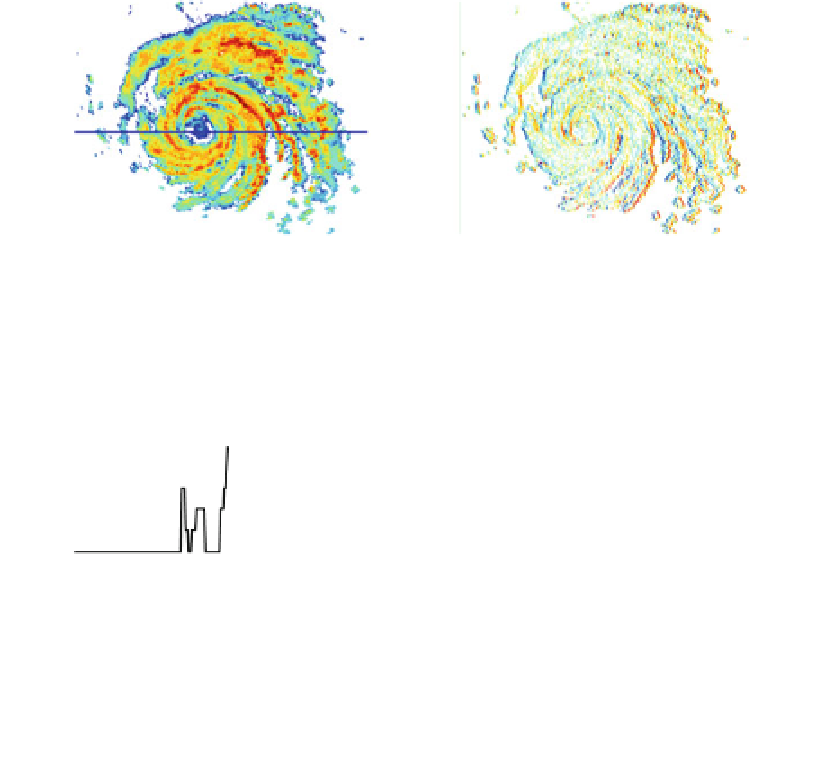Geoscience Reference
In-Depth Information
(a)
(b)
dBZ/km
40
dBZ
50
20
40
30
0
20
-20
10
0
dim:[400, 560] range: [0 50]
dim:[400, 560] range: [-36, 41]
Section A-A
(c)
50
40
30
20
10
0
0
100
200
300
400
500
x [km]
Fig. 2 a A high-resolution (HR) snapshot of hurricane Claudette, 07-15-2003, 11:51:00 UTC as monitored
by NEXRAD station over Texas at resolution 1 9 1 km and b the field of the computed horizontal first-
order derivative using the Sobel filter. A horizontal cross section through the storm is shown in (c). One
observes how the particular geometrical structure of hurricane precipitation projects itself onto an almost
piece-wise linear one-dimensional function with sporadic large gradients embedded within regions of almost
constant rainfall
demonstrates how the typical circular bands of high rainfall intensity manifest themselves
into an almost piece-wise linear structure in the 1D cross section. How is this geometrical
structure to be reproduced in downscaling lower resolution and noisy observations of
tropical storms, say available at 10-km resolution, down to 1- or 2-km resolution products?
Moving from a geometrical description to a statistical description, we note that coherent
precipitation intensity areas (similar intensity in nearby pixels) will result in almost zero
values in a derivative space, while the abrupt changes in rainfall intensity (large gradients
and discontinuities) will project as high values. In other words, we expect to see a prob-
ability distribution in the derivative space that has a large mass close to zero and a few
large positive and negative values. Figure
3
a shows the histogram of the derivatives of
precipitation intensities of hurricane Claudette in the horizontal (zonal) direction (com-
puted via a redundant orthogonal Haar wavelet transform, which is equivalent to using a
first-order difference discrete approximation). It is obvious that this histogram is consid-
erably different than a Gaussian probability distribution function (PDF) with a larger mass
around zero (capturing the large number of nearby pixels with similar intensity) and much
heavier tails than Gaussian (capturing the occasional very steep gradients). How can such a
statistical structure be explicitly incorporated in a precipitation downscaling scheme,
specifically for hurricanes and tropical storms?
The purpose of this paper is to present a new framework for precipitation downscaling
casting the problem as a discrete inverse problem and solving it via a variational










































































































